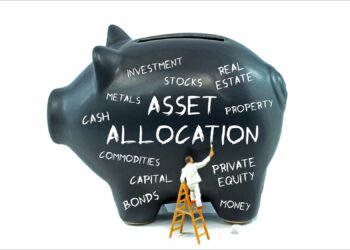As the New Year begins, many investors are reflecting on the lessons from 2018. It was a year characterised by volatility, trade tensions and a number of geopolitical events, all of which have left many investors wondering what they should expect next year.
Our high net worth clients are already considering what will characterise 2019, with four themes staying front of mind.
1. Expect volatility
If 2018 taught us anything, it is that expecting volatility is the safest course of action. Whilst there has been a lot of noise about what is driving volatility, ultimately the two key factors responsible are the tightening US Federal Reserve (the Fed) monetary policy, and the impact of trade tensions. These two factors are set to play a significant role in 2019 as well.
Following on from four rate hikes in 2018, Citi currently expects a further two hikes from the Fed in 2019. This reflects the strength in the US economy, as when the Fed tightens, the cost of borrowing goes up and this helps tame rising inflation in the US. However, increasing trade tensions are generating some questions about whether the Fed may change their approach and potentially slow down the pace at which they are raising rates.
While clients are expecting volatility, they are being cautious rather than alarmed. This is because the US economy is still very strong, unemployment is at 50-year lows and there is significant spending in both the private and public sectors. However, all of this is being contrasted by a slow-down in four of the five largest economies: the full effect of trade tensions on China is unknown, Germany and Japan have reported their first negative GDP growth since 2015 and the UK continues to struggle with Brexit.
With this global landscape in mind, the Fed must conduct a balancing act between raising rates too quickly and being too dovish, in order to avoid spooking the market. As these mixed conditions create uncertainty, it is clear why our clients are preparing for a volatile year ahead.
2. Consider defensive sectors
In 2016/17, the world enjoyed relatively smooth conditions for markets, largely due to highly accommodating central banks globally. This means new investors, or those guilty of having a short memory, are surprised by the volatility present in 2018. It’s important to keep in mind that this level of volatility is highly unusual, and reflects the market adjusting from an ‘accommodating Fed’ to a ‘tightening Fed’. Markets are only now shifting from a liquidity driven market to one driven more by fundamentals.
To prepare for such an environment, we are seeing our high net worth clients already positioning their portfolios more defensively ahead of the holiday season, with clients reducing their exposures. One asset class proving a popular alternative is investment-grade corporate bonds, which provide a ‘middle ground’ investment that generally comes with less risk than equities, but stronger returns than government bonds or term deposits.
In domestic equity markets, defensive sectors are also becoming increasingly popular. Healthcare remains a Citi overweight sector given its resilient earnings profile. It is a sector that looks to hold its value over the long-term, partly due to our ageing population. The consumer staples sector, which includes companies like Coles and Woolworths, is another popular option for investors expecting more dovish central banks, given the negative correlation of consumer staple performance to yield.
3. Seek deep valuation sectors
Over the last five years, growth sectors have taken centre stage. Technology, in particular the FAANG stocks of Facebook, Amazon, Apple, Netflix and Google, have been the growth drivers of US markets.
In 2019, we see value sectors playing a more pivotal role. A value sector is one that has been discounted due to a large degree of well publicised negative news. For example, in Australia, the banking sector is viewed as a value sector as result of the Royal Commission pressuring bank stock prices in 2018. Overall, the ASX 200 is also considered a value index as valuations have fallen to long-term low levels and the potential for upside may be worth considering.
4. Diversify across the yield spectrum
The benefits of diversification for generating healthy returns are well-known. In an environment of volatility, bond investors are encouraged to diversify across the yield spectrum. This will mean that if there is an eventual rate hike in Australia, the investor will be better protected as they will have a range of investment options, instead of holding all their eggs in one basket.
For example, many investors opt for longer term bonds which generally offer a higher yield, however tend to be more sensitive to changes in interest rates. Investors looking to diversify should also consider short end (floaters) through to neutral duration (fixed – variable). While these offer slightly lower returns, they come with less risk.
It should be noted that the likelihood of a rate hike in Australia appears low, with Citi predicting the next local rate hike may occur in 2020, making AUD corporate bonds attractive in the current environment.
Given the uncertainty going in to 2019, high net worth investors are opting to focus on capital preservation through bonds as they wait and see how events unfold in the New Year.
Peter Moussa is Citi’s investment strategist.





